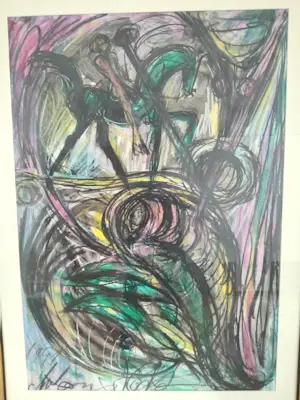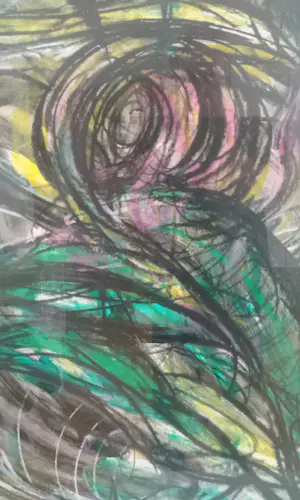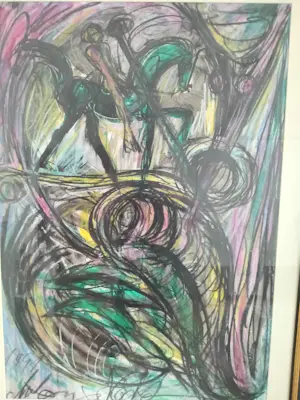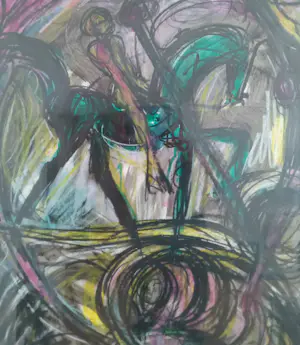Antonius Höckelmann - Abstract figures - Sold

This item has been sold Show item
- Description
- Antonius Höckelmann (1937-2000)
| Type of artwork | Drawing / Aquarelle |
| Year | 1991 |
| Technique | Pastel/Crayon |
| Support | Paper |
| Style | Abstract |
| Subject | Figures |
| Framed | Only in Passe-partout |
| Dimensions | 99 x 69 cm (h x w) |
| Passe-partout | 110 x 80 cm (h x w) |
| Signed | Hand signed |
Translated with Google Translate. Original text show .
The sculptor and painter is one of the most extraordinary artists of his generation. He rose to prominence in the mid-1960s with large drawings, and later with bizarrely exuberant sculptures. In his works, which oscillate between figuration and abstraction, he explores themes such as Eros, violence, and death, focusing on human and animal motifs (especially horses and birds). He finds inspiration in mythology, literature, and his immediate surroundings.
After an apprenticeship as a wood carver, Höckelmann studied at the Berlin Art Academy under Karl Hartung from 1957 to 1961.
During his subsequent stay in Naples, he studied Mannerist and Baroque sculpture. This led him to the exaggerated physiognomy of his figures, which is typical for him, as well as the dynamism inherent in his work. Following the principle of organic growth, he develops his sculptures using a wide variety of materials (e.g., wood, plaster, Styrofoam, aluminum foil, bronze), usually painting them in stages. He also uses a variety of techniques for his drawings and paintings. In these, he uses line to create a tense composition, which he enhances through expressive color. As surreal as his works may appear, Höckelmann always proceeds with a deliberate and controlled approach to their creation. Although he participated in important exhibitions, such as the documenta in 1977 and 1982, he largely withdrew from the art world and, from 1970 onwards, worked "quietly" in his Cologne studios.
Antonius Höckelmann is represented in the following museums and institutions:
- Lehmbruck Museum, Duisburg
- Gustav Lübcke Museum, Hamm
- Center for Art and Media Technology Karlsruhe
- Museum Ludwig, Cologne
- Saint Louis Art Museum
| Condition | |||||||
| Condition | Very good | ||||||
| The artwork is in very good condition | |||||||
| Shipment | |||||||
| Pick up | The work can be picked up on location. As a buyer you must bring your own packaging materials. The location is: Kleve, Germany | ||||||
| Shipment | Parcel post | ||||||
| Price | > 10KG or bigger than 1.00 x 0.50 meter
| ||||||
| Extra | In case of a purchase price above € 500.- you will have to pay an additional fee of (maximum) € 7.50 for extra shipping insurance | ||||||
| Guarantee | |||||||
| Guarantee | By putting the item up for auction, I agree with the Terms of Guarantee as they are applicable at Kunstveiling regarding the accuracy of the description of the item | ||||||
The seller takes full responsibility for this item. Kunstveiling only provides the platform to facilitate this transaction, which has to be settled directly with the seller. More information .





 German
German